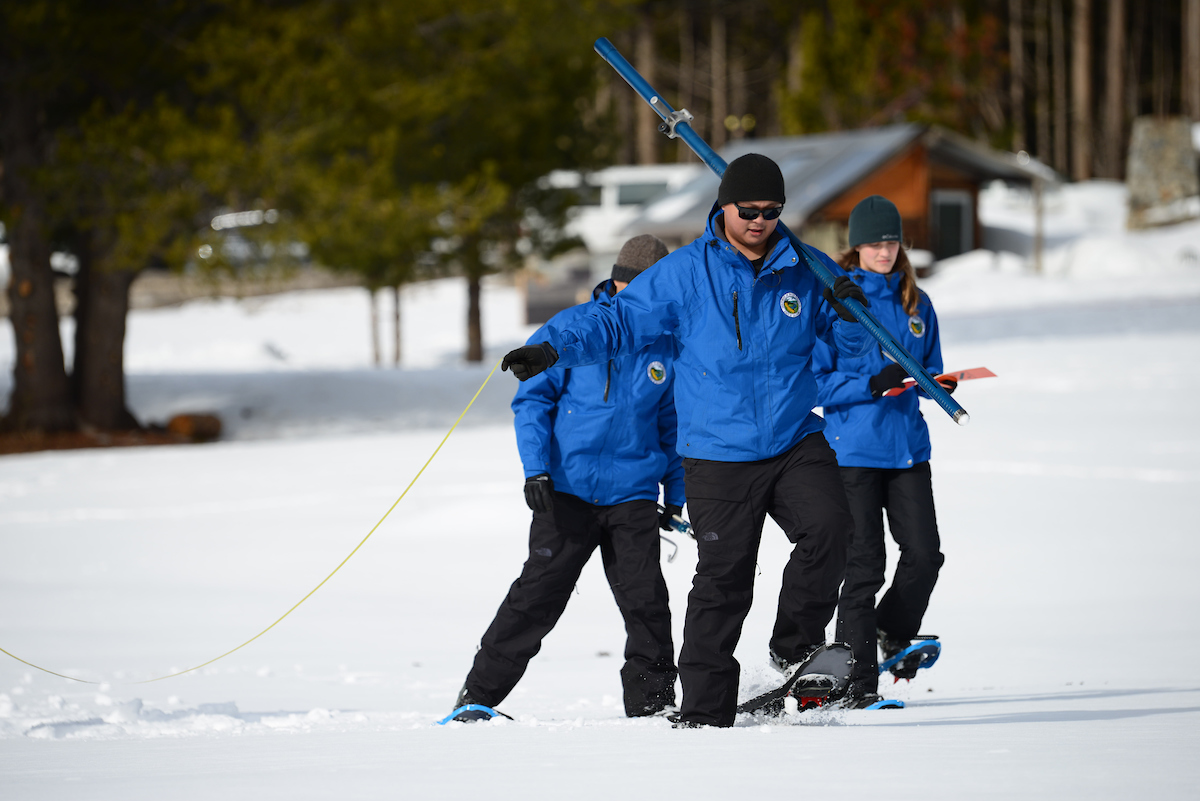Sean de Guzman, chief of the California Department of Water Resources Snow Surveys and Water Supply Forecasting Section, carries the measure tape to the next sampling point for the first snow survey of the 2020 season. DWR/2020
SACRAMENTO, Calif. – The Department of Water Resources (DWR) today conducted the first manual snow survey of 2020 at Phillips Station. The manual survey recorded 33.5 inches of snow depth and a snow water equivalent (SWE) of 11 inches, which is 97 percent of average for this location. The SWE measures the amount of water contained in the snowpack, which provides a more accurate forecast of spring runoff.
“While the series of cold weather storms in November and December has provided a good start to the 2020 snowpack, precipitation in Northern California is still below average for this time of year,” said DWR Director Karla Nemeth. “We must remember how variable California’s climate is and what a profound impact climate change has on our snowpack.”
More telling than a survey at a single location are DWR’s electronic readings from 130 stations scattered throughout the State. Measurements indicate that statewide, the snowpack’s SWE is 9.3 inches, or 90 percent of the January 2 average.
“It’s still too early to predict what the remainder of the year will bring in terms of snowpack,” said Sean DeGuzman, chief of DWR’s Snow Surveys and Water Supply Forecasting Section. “Climate change is altering the balance of rain and snow in California. That is why it is important to maintain our measurements of the snowpack to document the change in addition to having critical information to forecast spring runoff.”
California traditionally receives about 50 percent* of its annual precipitation during December, January and February, with the bulk of this precipitation coming from atmospheric rivers. Similar to last year, California experienced a dry start to this water year followed by cold, wet December storms that brought the state up to 74 percent of average annual precipitation for this time of year. Climate change is expected to lead to continued warming and fewer but more intense storms impacting the snowpack of the Sierra Nevada. These changes continue to impact the distribution of snow across elevations, its pattern of accumulation, and rate of melt.
DWR conducts five media-oriented snow surveys at Phillips Station each winter in January, February, March, April and, if necessary, May. On average, the snowpack supplies about 30 percent of California’s water needs as it melts in the spring and early summer.
*A previous version of this release incorrectly stated that California traditionally receives about 75 percent of its annual precipitation during December, January and February,
Video of January 2 Phillips Station snow survey.
Digital photos January 2 Phillips survey
###
Contact:
Chris Orrock, Information Officer, Public Affairs, Department of Water Resources
916-480-5414 | Chris.Orrock@water.ca.gov
